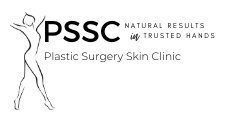The term “micro laser peel” sounds somewhat intimidating at first glance, when it comes to something touching your face. After all, no one wants parts of them being peeled off! Generally, we think of peeling skin as a bad thing, associated with sunburn and the like.
However, face peels are treatments that can do a lot for the quality of your skin and actually in long term protect your skin and leave the treated area looking and feeling better than before. Many facial peels are also very easy to perform, being simple to combine with other cosmetic procedures when visiting a med spa or skin clinic. If you’re looking to combat blemishes like acne, dark spots, or sunspots due to too much UV exposure on your face, it’s a good idea to head over to a Toronto Plastic Surgery Skin Clinic for a Face Peel!
What is a Face Peel?
The basic idea behind a face peel is that it is a procedure that removes the upper layers of your skin. Your skin is constantly regenerating itself, replacing dead skin cells with new ones. This regeneration is one of the main ways that your skin stays healthy. A face peel is any procedure that removes an upper layer of damaged skin, revealing healthier skin below.
Some face peels are known as chemical peels, which use chemicals to exfoliate the skin and remove the outer layers. Chemical peels use a variety of chemicals with a variety of intenseness to them.
Micro Laser Peel
Micro Laser Peels, on the other hand, are a bit different. As the name suggests, it uses focused light to remove the outer layers of skin. Compared to chemical peels, micro laser peels are much more precise. This means that you can target specific areas with laser treatment that you want to address, such as sunspots on your face and can often help with reducing the appearance of acne scars as well.
Generally, a micro laser peel is started by cleaning the skin and putting on a freezing agent, which takes from half an hour to an hour to work. Then the actual micro laser peel will take only 20 to 30 minutes to perform. The outer layers of skin will be dehydrated and peel away over the next few days.
Do Micro Laser Peels Hurt?
As mentioned, a professional cosmetic skin clinic such as PSSSC, will apply a topical freezing agent before giving a micro laser peel. This means that the process doesn’t hurt at all, as you won’t be able to feel it happening once the topical cream sets in. There may be some minor irritation after the procedure and noticeable swelling and redness depending on the sensitivity of your skin. You should get a care kit with creams to help you deal with any irritation after the procedures.
Is it Hard to Recover From a Micro Laser Peel?
Not at all! In fact, the micro laser peel is often called the “weekend peel” because it has a downtime of only 3 to 4 days, depending on how deep the peel is. Generally, after getting your micro laser peel, you’ll experience redness on your face – it will feel just like you got a sunburn. However, this sunburn will have peeled off into fresh and youthful-looking skin by the end of the week.
You need to take it easy and follow any care instructions your cosmetic surgeon gives you. It’s also a good idea to stay out of the sun during your recovery period.
Why Get A Micro Laser Peel?
A better question would be, why not! There are many different skin conditions that micro laser peels can deal with. Since they are removing layers of skin, they are excellent for helping eliminate discolorations or other rough patches of skin. In particular, however, they are popular for removing sunspots on the face and other signs of sun-damaged skin. The heat from a micro laser peel also helps promote collagen production. This then helps smooth out wrinkles (which are also often made worse by sun damage).
Sounds too good to be true? Contact us today to find out just what a micro laser peel can do for you.

